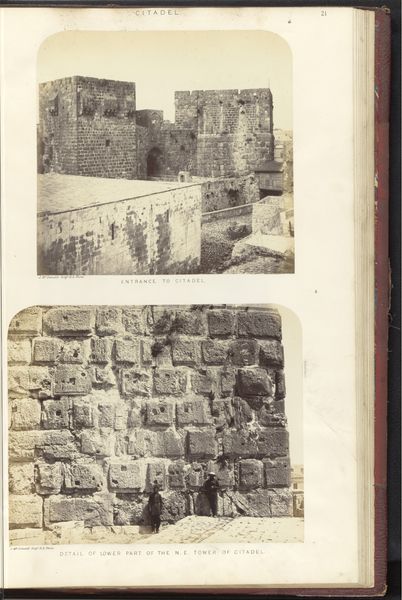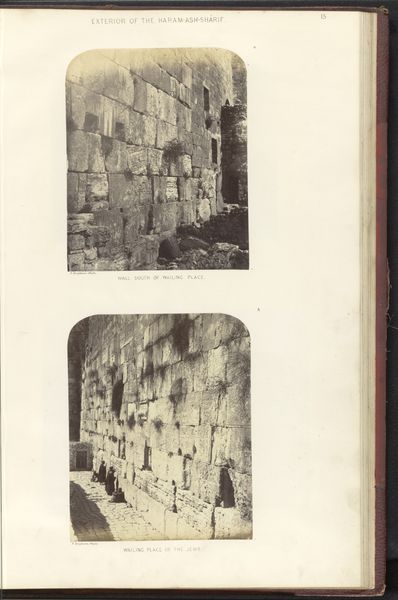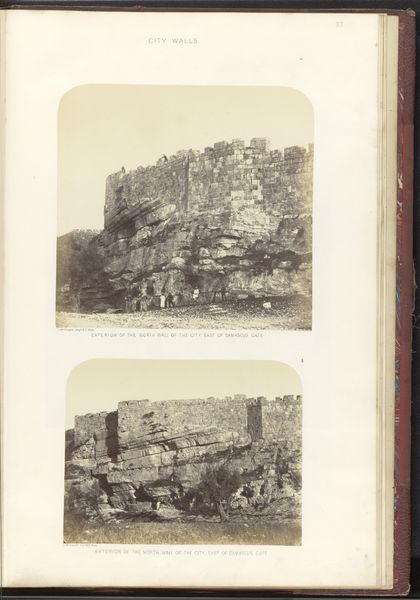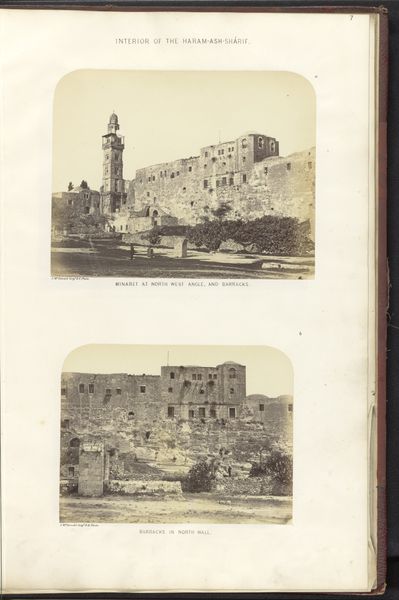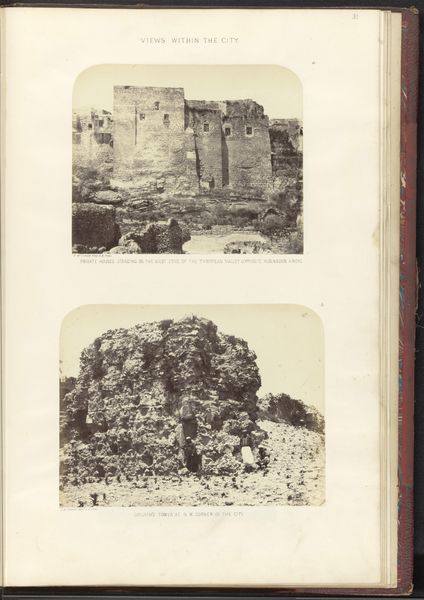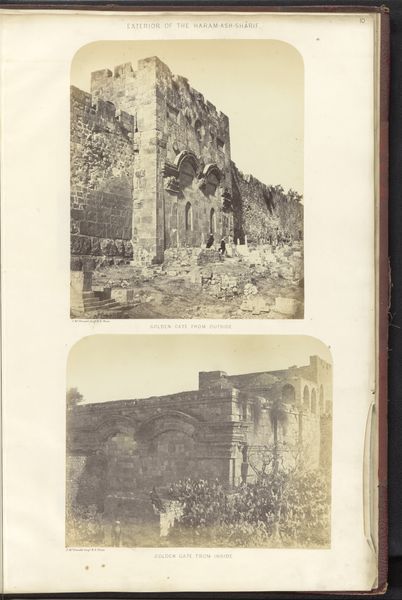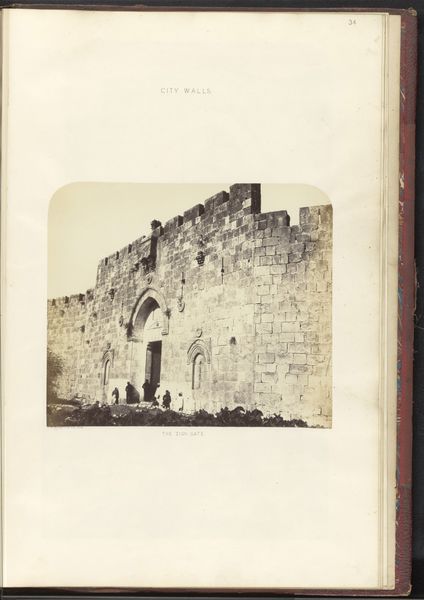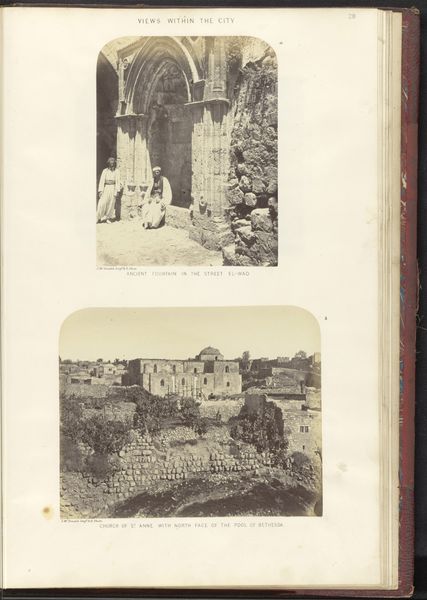
Gezicht op de Klaagmuur bij de IJzeren Poort en een gezicht op de noordelijke muur bij de Poel van Bethesda, van de Tempelberg in Jeruzalem before 1865
0:00
0:00
print, photography, albumen-print
# print
#
landscape
#
photography
#
coloured pencil
#
ancient-mediterranean
#
orientalism
#
cityscape
#
albumen-print
Dimensions: height 523 mm, width 340 mm
Copyright: Rijks Museum: Open Domain
Curator: This fascinating albumen print presents us with a couple of views of Jerusalem, specifically, the Western Wall near Bab-al-Hadid and the north wall at the Pool of Bethesda. It’s attributed to James McDonald, and it likely dates from before 1865. What are your initial thoughts? Editor: The image is incredibly stark. The pale tones of the stone against the deep shadows create this sense of isolation and perhaps, considering the title includes the Wailing Wall, even mourning. You immediately feel the weight of history pressing down. Curator: Indeed. That feeling is partly due to the meticulous depiction of the stone itself. It emphasizes the idea of Jerusalem as a palimpsest, layered with centuries of history. Each stone bears witness to a story, carrying both the sacred and the profane. The act of photographing these holy sites becomes a form of modern pilgrimage, preserving collective memory in the face of a rapidly changing world. Editor: Exactly. And it's interesting how photography itself becomes a tool of documentation, of asserting a particular gaze on the landscape and its inhabitants. Who is McDonald, and what's the colonial context of creating this image for a European audience? The photograph freezes a specific narrative and assumes a certain perspective toward the photographed space, but who does it serve? Curator: That is the question isn't it? Images are documents that can support varied ideological arguments, often related to religious or nationalistic aims. We see repeated use of orientalist visual tropes like figures arranged like artifacts, which suggests more concern with image construction, with fulfilling orientalist expectations, than objective realism. But it should be noted that, for many communities, Jerusalem symbolizes resilience. It represents continuity despite facing destruction and displacement across different periods. The Wailing Wall, especially, embodies generations of perseverance, the desire for recognition, freedom, and a collective belonging. Editor: And the very act of photographing, in a place resonant with interfaith tension, takes on complicated connotations about authority, presence, and whose stories are validated by the camera’s gaze. I also keep thinking about access: who *had* access to that space, and for what purposes? That very fact of image creation encodes privilege and erasure simultaneously. Curator: It seems McDonald offers more than meets the eye: a complex, contested cultural narrative, rendered in monochrome, where memory, identity, and historical reckoning come together to offer an ongoing interpretation of landscape. Editor: Absolutely, a critical reminder that images never simply represent; they actively shape how we see—and remember.
Comments
No comments
Be the first to comment and join the conversation on the ultimate creative platform.


